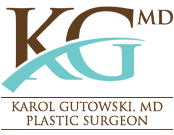If you have ears that protrude very far out either side of your head, you might be familiar with the feeling of self-consciousness and embarrassment it can bring. You may cover your ears with your hair or hats and will avoid earrings or certain hairstyles just so you don’t show them off. But no one deserves to feel unhappy with their body. But with otoplasty, one can dramatically change the appearance of their ears, reshaping them so they don’t stick out. This can restore confidence and make you feel gorgeous in your body. Here at Dr. Gutowski in Glenview, IL, we’re excited to help you achieve the ears you’ve always wanted.
How Long Does Otoplasty Take?
This procedure pulls a person’s ears more inward so that they sit closer to the side of the head. It’s used to remedy protruding ears, as well as large or asymmetrical ears. For this reason, the length of your treatment will depend on the exact cosmetic concerns you’re looking to target. On average, otoplasty takes two to three hours. For a cosmetic procedure, that’s quite a short amount of time that doesn’t eat into the whole day. After this time, you can go home to rest up and enjoy your new look.
Who Is a Good Candidate for This Procedure?
We recommend this procedure to anyone over the age of 18 who is unhappy with how their ears look. Whether that’s because they stick out too far, one is bigger than the other, or whatever else, if you dislike your ears you may appreciate what this procedure can do for you. During your initial consultation in our office, we’ll take a few steps to ensure it’s the right option for you.
Looking at Your Health
We’ll need to know about your medical history prior to organizing your procedure, including any past surgeries you’ve had and other ear procedures you’ve undergone. We’ll need to know about any medication you’re on and any health conditions you have in case they affect the way your body reacts to the procedure. For instance, cancer and bleeding disorders may make you ineligible for this procedure. More minor health issues are less likely to be a problem, but we’ll still need to know to make sure.
Discussing Your Goals
It’s important that you have realistic cosmetic goals coming into this and understand exactly what this procedure will be able to achieve. For example, you need your ears to stick out at least slightly off your head so you can wear glasses and sunglasses. It’s also important you can still reach the skin behind the ears to clean that area. For that reason, if you’re hoping your ears can be completely flattened against your head, you may have to change your expectations. Some patients also expect that after the procedure their ears will be 100% symmetrical. This procedure likely won’t achieve that. Most people’s ears are at least slightly asymmetrical but we generally don’t notice. Our patients find that in having their ears repositioned, any asymmetry isn’t obvious.
What Should I Do To Get Ready?
We offer highly personalized instructions for preparation based on your individual needs. We’ll do this during your consultation. The following, however, are some steps that we recommend universally. Following these will ensure you’re properly prepped and your recovery is speedy and comfortable.
Stop Smoking
Are you a smoker? If so, we’ll ask that you stop for at least a few weeks before the procedure. It can negatively affect how quickly you heal. Quitting smoking will improve your health overall, quickening the healing process for your ears.
Altering Your Medication
Some medications, such as vitamin E and fish oil, cause the blood to thin. This can be risky when we have to make incisions as part of your procedure. For this reason, we may ask you to either adjust the medication you’re on or just stop taking them for a few days.
Organize Help
The use of anesthesia in this procedure means patients cannot drive themselves home from their appointment. That’s why you’ll need to ask a friend or family member to either come in with you or at least pick you up afterward. Ideally, they’ll be able to look after you for twenty-four hours afterward too. This is because you’ll likely be tired and needing to rest and heal following the procedure. If someone’s there to help cook meals and do chores, you’ll have peace of mind and be able to relax.
What Will the Procedure Be Like?
We’ll start by administering anesthesia so that you’re totally comfortable throughout. Once the effects of this have kicked in, we’ll get to work.
Personalized to You
Every technique used during this procedure will be completely dependent on your cosmetic desires. During otoplasty procedures here at Dr. Gutowski, we employ different methods to achieve different results. We’ll often start with small incisions at the back of the ears. Going behind the ears means we can avoid creating any noticeable scars. Often we’ll remove some skin or cartilage from the ears. We commonly insert sutures, which are medical threads used to hold tissues and close incisions up, into the ears so that we can move them more inward and closer to the side of the head.
Finishing Up
When all that’s done, we’ll close up the sutures and dress the treated areas on your head. The dressing is used to hold your ears in place and to keep you comfortable.
What’s the Recovery Period Like?
Patients love how speedy and easy the recovery is for this treatment. While some cosmetic procedures can have you bedridden for weeks, otoplasty usually has people back at work after only a few days. You’ll still need to carefully follow our instructions, however, for an optimal recovery that keeps your new ears in place.
Keep Your Ears Protected
You’ll leave your procedure with a protective dressing over the treated areas and we’ll ask you to keep wearing that for a little while. After that’s off, you’ll wear a headband instead. We’ll ask you to wear this headband as you go about your normal daily routine and after a couple of weeks, you’ll be permitted to stop wearing it. It’s also recommended you sleep on your back for a period after the procedure. Sleeping on your side can put pressure on your ears, which could make you sore and slow the healing process.
Rest Up
We may offer you some medication to help you stay comfortable as your ears heal. It’s also important to cut out too much physical activity after the procedure. Exercise will likely be off-limits for a few weeks as will any lifting or other strenuous movement. Come Back to Our Office After your procedure, we’ll ask you to come back in for another appointment. This will be our chance to check on your ears and see how they’ve responded to the procedure. We also may use this time to take out your sutures.
Look After Your Ears
Even after your headband is no longer required, you’ll need to tend to your ears in the months following the procedure. Protecting them from high temperatures is crucial as they’ll be sensitive. For example, blow-drying your hair can get your ears quite hot, so this is something to be aware of. Shielding them from the sun is also an important step. Wearing a good, effective sunscreen on your ears when you’re outside is an easy way to do this. Avoiding the sun altogether may be necessary on the occasion when it’s very strong.
How Long Does It Take To See Results?
Everyone’s ears heal at different rates, but commonly they’ll be all healed after a few weeks. The results of the procedure take a while to become noticeable as your ears must adjust to their new position. After about two or three months, your ears will likely have settled into their new position and you’ll be able to see the final effects.
Will My Ears Change Size?
When your ears protrude, they can look very big in a way that’s disproportionate to your face. But actually, they’re likely average-sized but seem bigger because they’re sticking out. Large ears are actually pretty uncommon. If your ears are moved back into a more aesthetically pleasing position, they’ll likely look smaller. So it’s very possible that we can achieve very pleasing results without changing the size of your ears.
What if My Ears Really Are Larger?
Of course, your ears really might be much bigger than average. If this is the case, there are certain techniques we can employ to make them smaller. Something called a “wedge resection” is specifically used for this. In your consultation, we can discuss this and see if it might be something your ears would benefit from.
What About Correcting Asymmetrical Ears?
Perhaps you have ears that are completely different sizes, or one sticks out further than the other. We can definitely correct this too. Several techniques can be used during your procedure to balance your ears and make them more even. Though we cannot make your ears totally balanced – as mentioned above, few people have symmetrical ears – we will make them far more even. Patients who we’ve performed these techniques on love their new, balanced ears after they’ve recovered from the procedure. Any disparities between ears aren’t noticeable at all.
What’s the Best Age for This Procedure?
This procedure is very common amongst children. Sadly, children who have big, protruding ears can suffer from low self-esteem and getting teased by other kids. But because ears stop growing quite early in life, otoplasty is commonly used to help children with this issue. Their ears have flexible cartilage that can heal quickly, so they make great candidates for the procedure. That being said, we can offer this procedure to adults too. If you’re older and insecure about your ears, it’s not too late for you. This procedure is effective on both children and adults looking to correct their ears later in life.
Schedule a Consultation Today
Shapely ears contribute to an attractive face that makes us feel confident and comfortable. No one deserves to feel unhappy with large or protruding ears. Thankfully, an otoplasty leaves patients satisfied and thrilled with their new look. With a simple procedure and a short recovery period, there’s a lot to love. And we want to be there to go on this journey with you. To learn more, contact us now at Dr. Gutowski in Glenview, IL.









